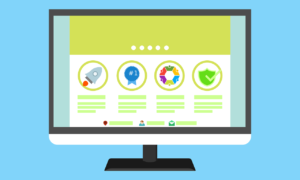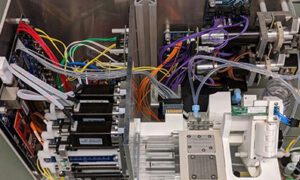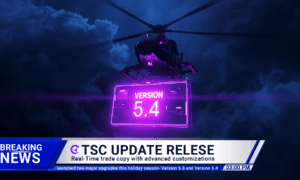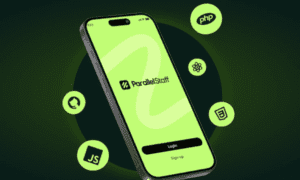CMS (Content Management System) applications to develop a website have been a game changer because they allow firms to independently create, manage, and more easily update their content. The challenge, however, is that many firms utilize the same kind of CMS applications for example, WordPress making these applications the target of many hackers. The common vulnerabilities of CMS applications include information breaches, unauthorized access, malware, and complete shutdown of a website. Which is Why marketers choose headless CMS because Headless CMS tend to be a more secure option
This awareness of how a CMS is typically exploited and how those vulnerabilities are patched will allow a hypothetical company to strengthen its online presence in a safe way without concern for downtime or negative reputation. When exploits are patched as a precaution, less reactive measures have to be taken to protect sensitive customer data, SEO failures, and changes in web visitor traffic.
Outdated CMS, Plugins, and Themes Leading to Security Risks
CMS sites are most vulnerable to outdated software. Hackers search for code exploits that have been discovered a long time ago and exist in the older versions of popular CMS products, plug-ins, and themes. Thus, when a company fails to upgrade their CMS, they make their site vulnerable to exploits that the hacker already has in his/her toolkit to apply and breach. For instance, a company using an older version of WordPress, Joomla, or Drupal is unintentionally vulnerable to exploits that have been patched in the newer versions
These are the hackers who can get in to add malware, reconfigure the site, or take credit card information from unaware clients. The way to avoid this issue would be to enable auto-updating for a CMS wherever applicable. If that’s not possible, then a minimum would be to manually update and establish a maintenance window to check for updates to the CMS regularly and implement those updates immediately once found. Moreover, any unused plugins and themes should be eliminated (especially those that are older and unsupported) as they tend to be backdoor entries for a cyber breach.
Weak Authentication and Poor User Access Control
Yet another common CMS security vulnerability involves passwords and permissions. For instance, a function such as a login page is susceptible to brute force attacks, for instance, allowing hackers to infiltrate a CMS’s login page and continuously attempt to guess a password until they successfully gain entry. Yet it’s easier for them to prevail if users have weak passwords and if too many users are assigned Administrator-level access. Therefore, it’s critical for organizations to employ a password policy that mandates users to create complex passwords of uppercase, lowercase, numeric, and symbolic characters.
Furthermore, multi-factor authentication (MFA) guarantees that if a password is compromised, the intruder cannot breach access without the extra access necessity. Another key security measure is role-based access control (RBAC). Not everyone requires administrative access, and not all employees should have that access as a user requirement. Instead, proper roles should be assigned per necessity so that only those persons with appropriate clearance make any changes necessary in the CMS. In addition, frequent audits of those who have access and deactivating accounts that are inactive for a certain period decreases the risk for unwanted access.
SQL Injection Attacks Exploiting Database Weaknesses
One of the largest threats to CMS security is SQL injection. SQL injection occurs when a hacker exploits a poorly defensively designed input field, making a hacker’s intended output a SQL query instead of what should have happened. With this type of infiltration, hackers can view database entries and even worse change or erase them. For example, a CMS without the proper access controls through input validation can expose all records of a user table to any unauthorized third party, which means anyone from cross-country truckers can view your passwords and usernames to your bank account numbers, email, and physical address.
SQL injection is avoidable with a CMS that incorporates input validation to sanitize what a user is able to enter and prevents unnecessary SQL queries from taking place. Prepared statements and parameterized queries disallow any inappropriate engagement and prevent what a user enters from being interpreted as a SQL query. In addition, many companies should establish limited access to databases so that if a hacker does breach an open access hole, he or she cannot alter or delete critical data. SQL injection vulnerabilities exist for hackers to exploit them so they should be eliminated ahead of time through frequent security audits and penetration testing.
Cross-Site Scripting (XSS) Attacks Injecting Malicious Code
Cross-site scripting (XSS) is also a prevalent vulnerability that impacts CMS. XSS is the ability for a hacker to inject malicious JavaScript into the hacker’s site. When a user intends to view a part of the hacker’s site, the JavaScript runs potentially exposing the user’s passwords, redirecting users to phishing pages, or automatically downloading ransomware onto the user’s device. Vulnerabilities like this can be avoided if your CMS consistently escapes and sanitizes any output from any user-supplied information because without this requirement, it can easily fall victim to XSS attacks.
In addition, content security policies (CSP) limit the probability of this vulnerability since they disallow any unpermitted scripts from executing on the website. Server-side validation ensures that no matter where a user attempts to submit a form or access a comment box or search field, any “bad” data from a nefarious user gets scrubbed before it ever enters the CMS. Even WAFs try to stop and classify XSS attacks before they get in.
Unprotected File Uploads Allowing Malicious Content
CMS systems support many file uploads, user profile pictures, vendor product pictures, company PDFs. However, when file upload features are vulnerable, a hacker can upload a PHP file renamed to .JPG or .TXT and invoke code to crash the whole server. The fix is to restrict what files can be uploaded and only permit the essentials. JPG, PNG, and PDF are allowable uploads; PHP, EXE, and JS are not. Furthermore, restrictions on file size and virus scanning reduce the chances of undesired uploads. Also, all uploads should be made in non-executable folders as well so the hacker cannot run executable commands through the CMS. A more secure option, in addition, would be some outside third-party cloud storage for uploads because the files are not in the CMS in a compromised location but a more secure monitored one.
Brute Force Attacks Targeting Login Pages
A brute force attack is an automated program that hackers use to guess a password over and over until it eventually works. Without a CMS having precautions to stop this from happening, brute force attackers can attempt to log in repeatedly until one day, it works. Unfortunately, one day, brute force attacks work. To prevent brute force attacks from happening, companies need an account lockout policy so people get temporarily locked out due to too many failed attempts.
In addition, companies should have CAPTCHA requirements so humans, not automated systems, can get their logins validated. In addition, the ability to restrict access via IP adds another security layer, as logins can be enabled from only certain approved locations while denying those that would raise red flags. Thus, an enterprise operating internationally with clients across the globe can still geofence access from legitimate locations in an effort to reduce the risk of a wayward attempt to login.
Lack of Website Backups for Disaster Recovery
Yet no CMS is completely protected from a cyber attack, either. With all the precautions, hacked pages, deleted information, and infected computers can shut down operations. A hacked website might be beyond repair in addition to being hacked if companies fail to take the precautions necessary to ensure site backups. For example, to avoid the devastation of a cyber attack, companies need to take the precautions necessary for an automated daily backup that ensures their files, information, and settings are saved somewhere else offsite. In this case, the cloud is a perfect solution for redundancy and easy restoration if downtime is what needs to be avoided from an attack. Equally important is the assessment of whether backups can be restored. There’s no use in having a backup if it cannot be restored. Therefore, companies assess that the information is still intact and that restoration can happen at any time because it should.
Protecting Admin Panels from Unauthorized Access
Another frequent exploit linked with CMS is an open admin panel. Numerous hackers try to access the admin panel through brute force or phishing at the very first entry page of a site. An admin panel that is easy to find and easy to access grants hackers access to the back end of a site, the ability to change textual content, access to personal data, or even adding malware. Default CMS admin URL changes to custom. Hackers have a harder time getting to the login page. Change the default. IP whitelisting allows only those from approved locales to enter the admin panel. Likewise, two-factor authentication (2FA) gives a second layer of security before allowing entrance. Finally, to ensure the security of access on questionable networks or even public ones administrators should access the CMS through a virtual private network (VPN) to lessen the chances that cybercriminals will intercept.
Securing API Endpoints from Exploits and Data Leaks
While today’s CMS connects by way of APIs to countless third-party services, mobile apps, and offsite databases, the unsecured APIs create endpoints that encourage data leaks and intrusion or injection vulnerabilities that compromise both company and customer data. For instance, an API that does not authenticate/validate users gives a hacker the chance to exploit the API and pull data out of the CMS or manipulate it. Since every API call is authenticated via an access token, this second layer of security not only prevents unauthorized intruders from accessing the API endpoints, but it also ensures that only vetted applications and individuals can access CMS data.
Furthermore, since there is rate limiting, individuals cannot overwhelm the API with too many attempts at calls, thus attempting to prevent a denial-of-service (DoS) attack. Finally, making API calls over SSL/TLS encryption creates a secure channel of communication between the CMS and any third party attempting to create an API call. The best way to prevent any public API endpoints from being exposed is to have a security audit regularly to ensure any API endpoints are vetted against appropriate security standards. Furthermore, due to this vulnerability, any APIs that are legacy or otherwise not used anymore should be disabled to prevent unnecessary attack surfaces or legacy vulnerabilities.
Preventing Cross-Site Request Forgery (CSRF) Attacks
Cross-site request forgery (CSRF) is an exploit that forces an authenticated user to do something they don’t want to do on a web application. For instance, if a content management system (CMS) is vulnerable to CSRF, a hacker can take advantage of people logged into a site to trick them into changing user settings, submitting forms that shouldn’t be submitted, or even sending money for the user. CSRF attacks are easily avoided by companies that require CSRF tokens for every major user activity done in the CMS, confirming that the activity was undertaken with legitimate intent.
Companies can also use session time-out requirements so that a would-be attacker cannot take over an active session of someone who is already logged in. Furthermore, requirements that a known user on a trusted device performs a major activity, such as changing a password or transferring funds, ensure that only the legitimate user can perform these actions. In addition, same-site cookie properties prevent outside actions from changing what can be done in the CMS session. The types of companies that operate at the highest security levels are those that check their logs and attempt to act on anything suspicious, which allows them to prevent CSRF efforts from happening in the first place.
Conclusion
CMS security isn’t a process that ends. It’s a continually conscious, updating, protective measure. Ultimately, for those who neglect CMS security, the potential for data breaches, malware, or hacks is ever-present, resulting in loss of income, a tarnished reputation, and possible legal action. An educated CMS launch upkeep schedule, effective permissions and database access, low-level vulnerabilities like SQL injection, cross-site scripting, etc. transform the potential for online attack into a castle.
In addition, file upload vulnerabilities, brute force login vulnerabilities, and consistent backup reliability make a CMS stable and secure. A secure and stable CMS will keep your treasures in-house and at the same time, play nicely with customers, search engines, and government regulatory agencies. Companies that go the extra mile for security and intruder avoidance not only safeguard their online treasures but also enjoy a continually safe online experience.



































